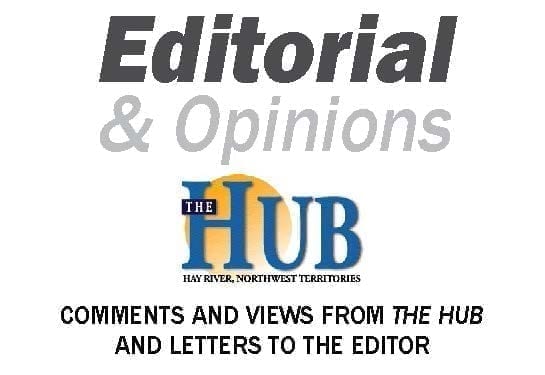Earlier this year, Hay River's council dropped from eight members to seven. As it stands, council is divided on how to deal with the vacant seat, with three in favour of filling it, three in favour of replacing it and one saying they would go with the majority.
But who is in the majority when the two sides are evenly divided?
The balance could hang in the fact that of the councillors that want to fill the position, there is a disagreement over the best way to proceed – with two arguing for acclaiming the next person on the ballot and another wanting a byelection.
The situation is not new by any means. Council seats have become vacant at least a handful over the last few terms. In some instances, the seat has been filled, in others it was left vacant.
Each move is sure to have upset some residents for various reasons, but that's the nature of democracy.
The most recent vacancy is certainly not straightforward situation. During the last election, there were only nine candidates for eight positions.
The last two candidates ended up being tied on the ballot and the seat was ultimately determined by pulling a name from a hat – not exactly the most sophisticated decision-making process.
Democracy is not always cut and dry, processes can be messy and outcomes might not always be the ones most desired.
But the goal of having a system of government that serves the people through open and transparent debate should always be to serve the will of the people.
The question as to what the will of the people is in this case is murky.
In 2015 the town held a plebiscite over whether it should shrink the number of councillors from eight down to six. At the time a small majority of voters – 601 to 575 – said they would rather see a smaller council.
Given the narrow margin council voted at the time to maintain the status quo of eight councillors.
So on the one hand, a majority of the town thinks council is too big.
The fact that vacancies keep being an issue is a sign that maybe council is too big. Taking into consideration that the mayor was also acclaimed in the recent election, it might be worth considering if more competition for fewer spots would make for a more robust democracy.
On the other, the current council was voted in based on having eight councillors and in the last election people voted accordingly.
So, what is the best way forward?
Although there have been precedents for vacancies in the past, the unique nature of this current one – especially the fact that there was a tie for the last remaining seat, call for a unique solution.
If transparency is paramount to this council leaving the seat open should not be an option. While the motives for leaving the seat open may be legitimate – saving money, improving efficiency – those are not democratic mandates in and of themselves.
Hay Riverites voted for eight councillors to serve them in the last election and that is the mandate the town has been given by the people.
Given that there was a tie for the last seat, with no one else interested in running at the time, it would arguably be fair to acclaim the next person in line. However, that assumes that nothing has changed since the last election and would disqualify someone who might see an opportunity to make a positive difference on this council.
Although it may be the less popular option the truly transparent thing to do would be to hold a byelection and then revisit council size at a later date.
As it stands, that is looking like the least likely option. At the end of the day council will not crumble if the seat is left open.
If the public has an opinion on the matter now would be the time to speak up and contact their councillors to weigh in.
Otherwise council will be left to make the decision on their behalf.